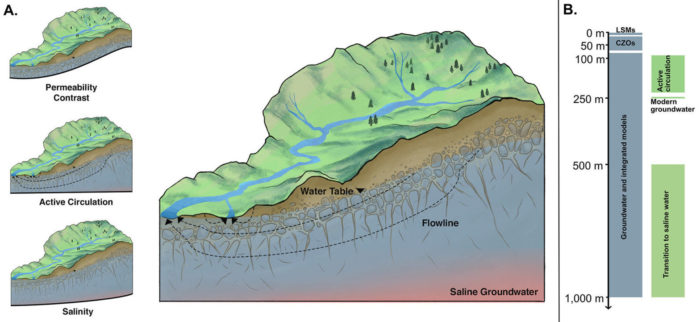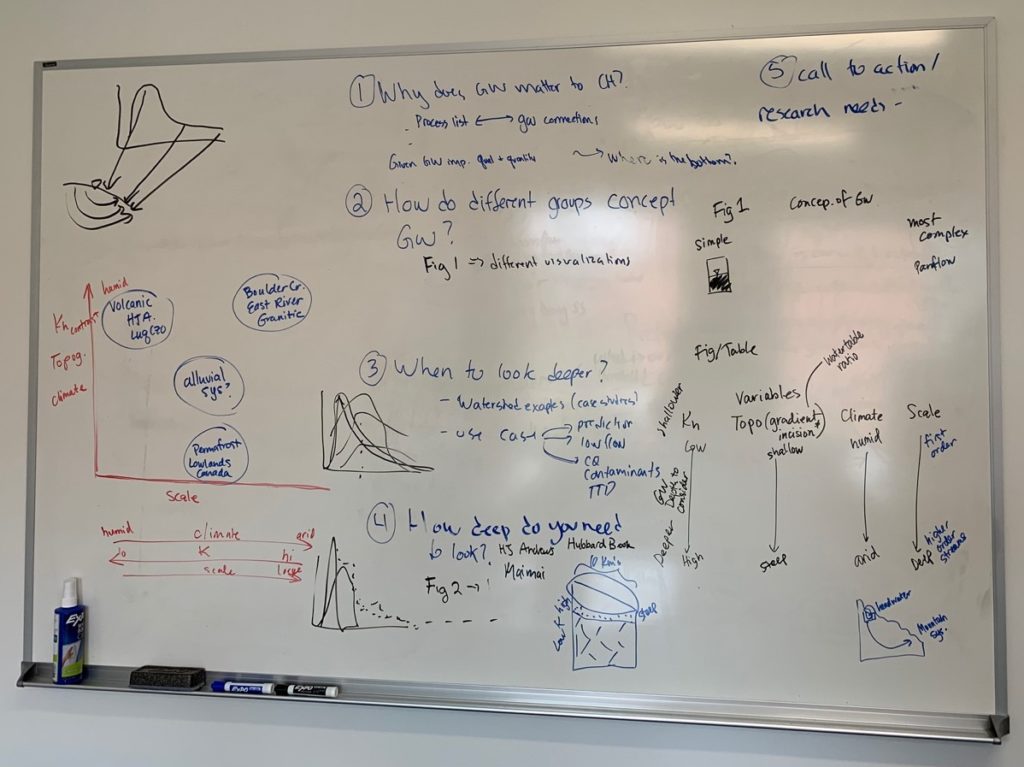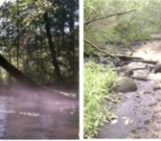

![]() n a recent commentary published in Water Resources Research, a group of us asked the question: “Where is the bottom of a watershed?” Discussions around the role of deeper groundwater in the hydrologic cycle within this group were triggered by a lecture that Jennifer McIntosh delivered at the University of Saskatchewan’s Global Institute for Water Security in 2018. The discussions around this lecture, which dealt with groundwater flow systems reaching a few kilometres deep in some cases, revealed that different subdisciplines within hydrology differ on how to define “deep” groundwater. Despite a few decades of progress on groundwater-surface water interaction and the advent of integrated groundwater-surface water models, it was clear that very different conceptual models of how groundwater fits into the hydrologic cycle were held by different communities within hydrology.
n a recent commentary published in Water Resources Research, a group of us asked the question: “Where is the bottom of a watershed?” Discussions around the role of deeper groundwater in the hydrologic cycle within this group were triggered by a lecture that Jennifer McIntosh delivered at the University of Saskatchewan’s Global Institute for Water Security in 2018. The discussions around this lecture, which dealt with groundwater flow systems reaching a few kilometres deep in some cases, revealed that different subdisciplines within hydrology differ on how to define “deep” groundwater. Despite a few decades of progress on groundwater-surface water interaction and the advent of integrated groundwater-surface water models, it was clear that very different conceptual models of how groundwater fits into the hydrologic cycle were held by different communities within hydrology.

Part of the brainstorming process that led to this commentary.
In writing this commentary, we asked about different perceptions of the watershed bottom and what the implications of those perceptual models might be? Those of us who have worked extensively on groundwater in regional flow systems tend to think about flow systems extending to depths of several 100 meters to a few kilometers. The catchment hydrologists among us tend to think about scales as shallow as a few meters in some cases. The differences in perceived scale and control volume were very much related to the types of problems that we were individually focused on. Hydrogeologists tend to look at processes occurring over long time periods, which are particularly important for problems related to geochemical cycling and contaminant transport; generally looking deeper into the subsurface. Catchment hydrologists tend to be interested in precipitation-runoff events and the more mobile portion of the catchment water cycle. Such understanding of stream hydrograph shape and timing and associated transit time distributions typically only require understanding the uppermost part of the groundwater system.
While much of what hydrogeologists study in the deeper subsurface may not be immediately relevant to problems in catchment hydrology, their perspectives on the subsurface may help catchment hydrologists to delineate the bottom of their flow systems and the tail of the streamwater transit time distribution. Hydrogeologists often scrutinize rigorously the bottom of their groundwater flow systems by examining permeability distributions and various groundwater age tracers. These approaches could be helpful to determine which flowpaths need to be captured in delineating the bottom boundary for catchment hydrology applications.
Conversely, we know that not all of the groundwater system needs to be considered to understand surface water models. Groundwaters that have circulated to depths of 100s of metres will typically have very long residence times (tending to pre-Holocene deeper than 200 m) and in most situations are probably not volumetrically important to streamflow and may make integrated models unnecessarily complex. Overall, our windows to the ‘bottom of watersheds’ are few and far between, emphasizing the importance of examining where and how we set this bottom boundary.
Overall, we were surprised to find the diversity of viewpoints within a group of six hydrologists. This speaks to the interdisciplinary nature of hydrology and the challenge of working across different subdisciplines in hydrology. We view this challenge as an opportunity for richer discussion between groundwater and surface water hydrologists. Our team’s discussions were lively and spirited and we found that branching out from our narrow personal focused research interests led to a broader and more useful understanding for individuals within the group. In the end, asking where “the watershed bottom is” may be a way to engage many specialities within hydrology to reach across their personal hydrological interface to help question and advance our integrated perceptual, conceptual, and physical models.
Condon, L. E., Markovich, K. H., Kelleher, C. A., McDonnell, J. J., Ferguson, G., & McIntosh, J. C. (2020). Where Is the Bottom of a Watershed? Water Resources Research, 56(3). https://doi.org/10.1029/2019wr026010




